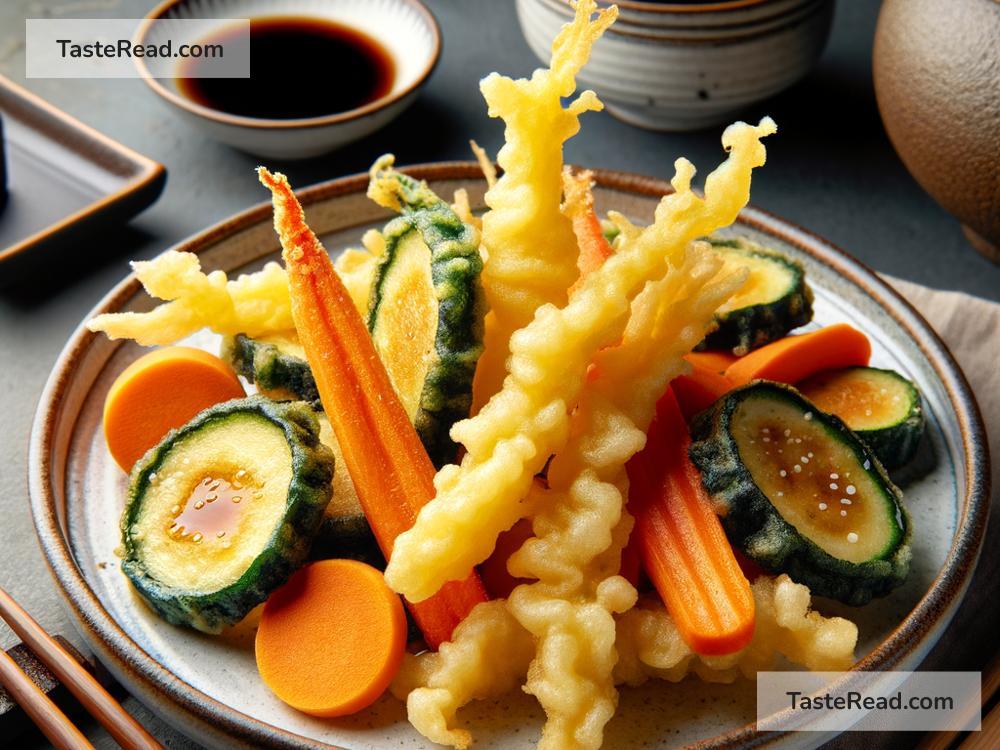Step-by-Step Guide to Making Light and Crispy Tempura Vegetables
Tempura is a Japanese dish that features lightly battered and deep-fried vegetables, seafood, or other ingredients. It’s known for its crisp texture and delicate flavor. Tempura vegetables, in particular, are a great way to enjoy fresh produce in a fun and tasty way. If you’ve ever wondered how to make light and crispy tempura vegetables at home, you’re in luck! In this blog, we’ll take you through a simple, step-by-step guide to making this delicious dish.
What is Tempura?
Tempura originated in Japan and is a popular cooking method that involves coating ingredients in a thin batter and frying them to a golden crisp. Unlike other types of frying, tempura highlights the natural flavors of the ingredients while delivering a crunchy texture that isn’t heavy or greasy. The secret lies in the batter, frying technique, and choosing the right vegetables.
Ingredients You’ll Need
Here’s what you’ll need to make light and crispy tempura vegetables at home:
For the Batter:
- 1 egg (large)
- 1 cup (240 ml) of ice-cold water
- ¾ cup (95 grams) of all-purpose flour
- ¼ cup (30 grams) of cornstarch
For the Vegetables:
Choose vegetables that are fresh and can hold their shape when fried. Some good options include:
– Carrots (cut into thin strips)
– Sweet potatoes (sliced into thin rounds)
– Zucchini (sliced into thin strips or rounds)
– Mushrooms
– Bell peppers (sliced into strips)
– Green beans
– Broccoli florets
– Cauliflower florets
Additional Ingredients:
- Oil for frying (vegetable oil or canola oil works best)
- Salt, for seasoning
- Soy sauce, tempura dipping sauce, or ponzu sauce for serving
Step 1: Prepare the Vegetables
Before making the batter, wash and cut the vegetables into bite-sized pieces. Thinly sliced vegetables fry better and become crispier. Keep the shapes consistent so that the vegetables cook evenly. Pat the vegetables dry with paper towels; excess moisture can make the batter soggy.
Step 2: Make the Batter
The key to light and crispy tempura is the batter. It should be cold, simple, and mixed gently. Follow these steps to make the batter:
1. Beat the egg: In a medium bowl, lightly beat the egg until combined.
2. Add ice-cold water: Pour in the ice-cold water and stir gently. Ice-cold water helps keep the batter light and crisp during frying.
3. Mix the flour and cornstarch: In a separate bowl, sift together the all-purpose flour and cornstarch. Sifting ensures the batter is smooth and lump-free.
4. Combine wet and dry ingredients: Add the flour mixture to the egg-water mixture. Stir gently with chopsticks or a fork. Do not overmix; a few lumps are fine. Overmixing creates gluten, which can make the batter heavy.
Step 3: Heat the Oil
Pour vegetable oil into a deep frying pan or pot. You’ll need enough oil to fully submerge the vegetables, so aim for about 2–3 inches (5–7 cm) of oil. Heat the oil over medium-high heat until it reaches 350°F to 375°F (175°C to 190°C). Use a kitchen thermometer to check the temperature, or test it by dropping a tiny bit of batter into the oil—it should sizzle and float on the surface.
Step 4: Coat the Vegetables
Once the oil is hot, it’s time to coat the vegetables:
1. Dip each vegetable piece into the batter, making sure it’s fully coated.
2. Gently shake off excess batter before placing the vegetable in the hot oil. This prevents the tempura from being overly thick.
Step 5: Fry the Vegetables
Carefully place battered vegetables into the hot oil, a few pieces at a time. Do not overcrowd the pot, as it can lower the temperature and result in soggy tempura. Fry for 2–3 minutes, or until the tempura is light golden and crispy. Use tongs or a mesh strainer to remove the fried vegetables and transfer them to a plate lined with paper towels to drain excess oil.
Step 6: Serve and Enjoy
Tempura is best enjoyed immediately while it’s hot and crispy. Arrange the fried vegetables on a serving platter and sprinkle them lightly with salt. Serve with soy sauce, tempura dipping sauce, or ponzu sauce on the side. If you want to make the dish more complete, you can pair the tempura with steamed rice or udon noodles.
Tips for Success
Here are some extra tips to make sure your tempura turns out perfect:
– Keep the batter cold: Use ice-cold water and chill the batter if needed.
– Fry in batches: Overcrowding the oil will make the tempura greasy and soggy.
– Maintain oil temperature: Monitor the oil temperature to keep the tempura light and crisp. Adjust heat as needed.
– Eat immediately: Tempura loses its crispness as it cools, so serve it fresh.
Final Thoughts
Making light and crispy tempura vegetables at home is easier than you might think. With just a few basic ingredients and some simple steps, you can recreate this Japanese favorite in your own kitchen. It’s a great way to enjoy fresh vegetables in a delicious and fun way. Try this recipe today, and impress your family and friends with your tempura-making skills! Happy cooking!


